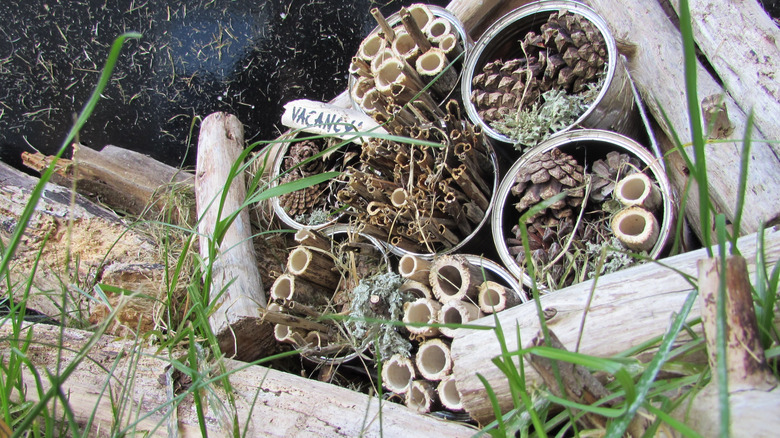Protect Pollinators During Winter With A DIY Solution That Uses Fall Yard Scraps
Ever wondered where summer's birds and bees go when winter arrives? The answer is they don't really leave at all. Some of them are simply hunkered down in safe places nearby. Even though you've DIYed your garden into a pollinator haven, butterflies, bees, bats, and birds have different cold weather habitats and need different winter accommodations. The pollinators that spend the winter can be encouraged to stay in your landscape with the addition of a brush pile or a snug home made from debris they can use as habitat. It's one of the ways you can support wildlife in your yard before winter. Come spring, the pollinators will emerge again to visit your flowers and trees as they begin to bloom.
You won't see monarch butterflies in your garden in the winter because they migrate south, but most other butterflies don't leave. Depending on the type, they may overwinter as an adult, egg, larva, chrysalis, or caterpillar. Dried leaves provide winter habitat for these butterflies in their various life stages. Some bees hibernate but others spend the winter in hollow stems, and birds that don't migrate, such as cardinals and blue jays, need food and protection from harsh weather. Constructing a debris structure that combines all of the elements different pollinators need is a simple solution to provide these vital creatures a winter safe haven.
Building a winter home for pollinators
When you're cleaning up your yard in the fall, set aside the materials you need for your brush pile, or construct the pile as you clean. It doesn't have to be a complicated structure, but if you prefer, you can build a teepee-shaped frame for your pile from fallen limbs and fill it in as you gather debris. The pollinators don't care about the shape, but there are a few things you can do to make your habitat more friendly. It should be at least 6 inches in height so branches and debris aren't tightly packed. Leave air space for different birds and small animals to find their ideal winter homes. You can also pile rocks and gravel near a soft pile of disturbed earth to provide an overwinter home to bumblebees.
Some bees nest in the hollow plant stems of plants. Toss the dried stalks of sunflowers (Helianthus annuus) or the pruned limbs of lilacs (Syringa vulgaris) or bamboo canes (Bambusa vulgaris) in the brush pile. The pithy stems of plants like Joe Pye weed (Eutrochium sp.) and berries (Rubus sp.) are good places for bees to burrow and lay eggs. Leave black-eyed Susan (Rudbeckia hirta), sunflower, and coneflower (Echinacea paradoxa) seed heads in the pile for birds to eat. Logs of hardwood trees with the bark attached provide places for nesting and laying eggs as well. Your debris structure serves a purpose beyond providing habitat for beneficial pollinators. All of the organic material you've supplied will decompose, leaving a natural alternative you can substitute for commercial mulch.

